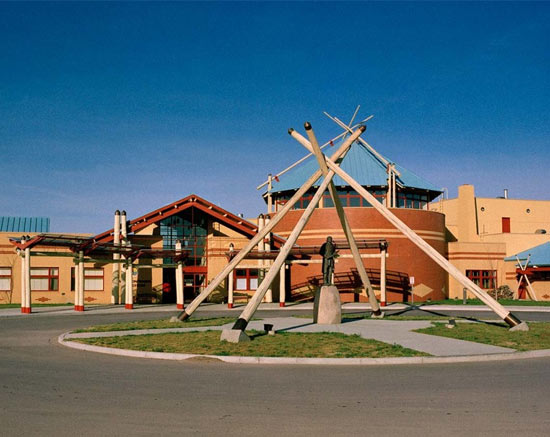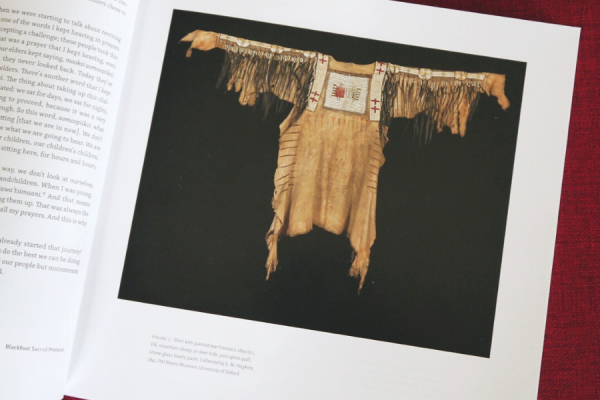In December 1994, the United Nations General Assembly proclaimed that August 9th would be recognized as the International Day of the World’s Indigenous Peoples. A theme is chosen each year to draw attention to the problems faced by indigenous people around the world. This year the theme is “Ensuring Indigenous peoples’ health and well-being,” a theme particularly relevant to the Aboriginal people of Canada and the recent findings of the Truth and Reconciliation Commission (TRC). The Commission’s findings identified seven health issues that seven calls to action in the area of health. The commission asked the federal government of Canada to “identify and close the gaps in health outcomes between Aboriginal and non-Aboriginal communities.”
The Final Report by the TRC recognizes that while Aboriginal health practices and beliefs are diverse, “an holistic approach to health is common to many Aboriginal cultures.” The report goes on to say that the “best practices for Aboriginal wellness involve a range of services from mainstream health care to traditional practices and medicines, all under community leadership and control. Such an integrated approach has the power to improve the lives of all community members.”¹
These recommendations are in-line with much of what we hear from Joseph Couture, Rena Point Bolton, and Frank Weasel Head—prominent Aboriginal leaders who have published with AU Press and commented on the health and well-being of Indigenous peoples. Below are excerpts from their work that discuss the restorative process of Native healing, the sharing of traditional healing and knowledge and finally, the far-reaching and sometimes surprising healing that occurs as a result of social justice.
Joseph Couture respected Elder, traditional healer, and educational psychologist

Eagle feather in Dr. Joe’s colours: yellow, white, red, and royal blue. Drawing made by Bob Martial for Dr. Joe, 2007.
“Healing Centres tend to view individuals on arrival as hurting, angry, and out of balance with themselves, their family, their community, and their Creator. It is up to each person, under Elder guidance, to learn where he or she fits into the contemporary Native spiritual mosaic and—equally important—to perceive how to take advantage of the potential of institutional programs.
The propelling belief [of the Centre] is that each person is capable of love, forgiveness, nurturing, and understanding, factors deemed necessary to acquiring and sustaining balance. ‘Balance’ denotes objectives such as a sustained willingness to take full and active responsibility for the past, the attainment of psychological and emotional stability, and the application of positive techniques for recognizing and coping with trauma and conflict, for neutralizing internal distress, facilitating self-awareness, and drawing out and strengthening personal potentials.
The long-term objective is to demonstrate one’s ability to hold to a healing journey upon release from the Centre through a continuing a one-day-at-a-time approach that goes to the roots of patterns or tendencies to violence and abuse.”
Rena Point Bolton Stó:lö matriarch, artist, and craftswoman
“Mother took me out into the woods and along the riverbanks gathering herbal medicines. She showed me the plants and the barks of the trees to use. When people were sick, she would ask me to go with her—whatever illness they had—and she would show me the kind of plant and bark to use. We’d take them home and she’d clean them and scrape them and cut them and boil them. We’d put them in jars or bottles and take them to the sick person. She never accepted money. She said it was wrong to ask for money for helping people who were ill. It was just our job and we had to do it.”
Xwelíqwiya: The Life of a Stó:lō Matriarch
Frank Weasel Head Blackfoot traditionalist and Elder for the Iitskinaiksi (Horn Society)
“We do not see all the benefits of repatriation at once. Several weeks ago, I was having supper with my wife and we started talking about repatriation. Something occurred to me. In the 1970s, when we first brought back those bundles, the community started talking about taking over our health services. We did that, and now we run our own health services. When more bundles came back in the 1980s, we took over our education. Now, we run our own education, and about 90 percent of our education system is staffed by our own people. With each repatriation, something else happens. In the 1990s, we started our irrigation project. This is one of the largest in North America, bringing 25,000 to 30,000 acres under irrigation and providing much-needed income to our reserve. Now we are talking of repatriating our own children who have been placed in foster care outside of our communities. This requires negotiating a tripartite agreement with the Province, the federal government, and ourselves. We believe that just as our bundles belong at home, the community is the best place for our children. […]
It seems to me that whenever we bring home something that came from our ancestors, it ignites our will and our self-esteem. We remember that, at one time, we were able to do all these things on our own. If we can bring back a bundle, we can bring back other parts of our culture. To me, it is all part of repatriation. It is not only a repatriation of sacred items. It is a repatriation of a way of life that was taken away from us through residential schools and all those other efforts to assimilate us.”
(Featured photo above: The extended health care facility at Standoff, Kainai Nation. Photograph by Ron Marsh, courtesy of the Glenbow Museum.)
1 The full report can be found here



